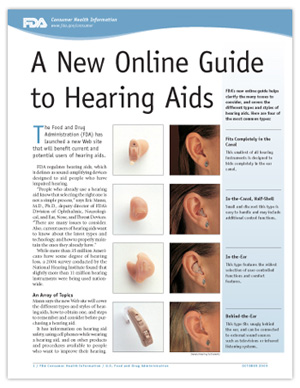Archive
Link Between Cell Phone Use and Tinnitus
Tinnitus – chronic ringing in the ears – affects approximately 50 million Americans to some degree, according to the American Tinnitus Association. It can be intermittent or constant and ranges from a simple annoyance to seriously debilitating (ATA.org). The most noted cause of tinnitus is noise exposure, but a new study suggests an increased risk associated with cell phone use.
The study, published last month in Occupational & Environmental Medicine, a BMJ Publishing Group journal, found that regular use of a cell phone for 4 or more years doubles one’s chances of developing chronic tinnitus. Patients involved in the study who used their cell phones for an average 10 minutes a day were 71 percent more likely to have the condition (Twincities.com). In a world where telecommunication has become a primary method of conducting business and keeping up with loved ones, these statistics may seem daunting, but their implications are worth acknowledging.
“Because tinnitus affects quality of life and current therapeutic interventions have limited effectiveness, assessment of potential risk factors and their prevention should be a public health priority,” Hans-Peter Hutter, a researcher at the Institute of Environmental Health at the University of Vienna, and other authors wrote, quoted Twincities.com.
The BMJ study compared 100 patients with chronic tinnitus to 100 random individuals without the disorder, over the course of one year, according to Twincities.com. Groups were matched for age and sex and compared. Anyone with ear disease, noise-induced hearing loss, high blood pressure, or taking medication that increased the risk of tinnitus, was excluded from the study. Cell phones were used by most participants (Twincities.com).
In the online “Tinnitus and mobile phone use” abstract, the study’s researchers concluded that, “Mobile phone use should be included in future investigations as a potential risk factor for developing tinnitus.” So whether you switch to using your land-line or upgrade to a new phone with video conferencing, future developments in this study should be followed. According to ATA, there is currently no cure for tinnitus.
SOURCES: Twincities.com, ATA.org, Occupational and Environmental Medicine
Related Articles: Newsinferno.com
New Drug Could Reverse Noise-Induced Hearing Loss
Researchers from the University of Auckland, New Zealand, have made promising advances in the fight to restore hearing loss. By injecting a chemical agent called adenosine amine congener ‘ADAC’, Dr Srdjan Vlajkovic and his team were able to restore hearing loss in rats that was caused by noise.
Previously, the only way to treat noise-induced hearing loss was with hearing aids or the use of cochlear implants. (Stem cell research is also making strides toward a cure.) But the success of ADAC in rats gives hope for a mirrored response in humans. Dr Vlajkovic told Mail Online, ‘To our knowledge, this study presents the most effective pharmacological strategy to date for reducing noise-induced hearing loss after exposure to damaging noise.”
To test the effectiveness of the treatment, the scientists measured the hearing in the rats before and after treatment. Their results showed that cochlear injury and hearing loss in the rats were substantially restored when ADAC was administered after noise exposure.
Results proved to be optimum the closer to noise exposure that treatment was received. While improvement was still noted when treatment was received starting 24 hours after noise exposure, a five day treatment of daily injections starting six hours after exposure was the most effective.
The Royal National Institute for Deaf People (RNID) of the UK funded this research. Their mission is to “help people identify whether they have a hearing loss…campaign for change… provide services and training, and (to) actively support scientific and technological research.”
SOURCES: springer.com, mailonline.com,






